I want to create a dual axis plot in ggplot R with a dual bar and line plot, like this one created in excel.

The y axis scales are different.
my data is as follows;

I've created a bar plot and line plot. But unsure on how to put them together (I've tried man various ways and they don't seem to work).
Here is my code for the bar plot.
inf_conc <- ggplot(data=data, aes(x=Day, y=inf)) +
geom_bar(stat="identity", width=0.4, color="red3", fill="red3") +
ggtitle("Influent Microplastic Concentration \n and Flow Rate") +
# \n splits long titles into multiple lines
xlab("Day") +
ylab("Microplastic Concentration (MPs/L)") +
scale_y_continuous(limits =c(0, 50), breaks = seq(0, 50, 5))
inf_conc + theme(axis.text = element_text(size = 20, colour = "black"),
plot.title = element_text(size =25, hjust = 0.5,
face = "bold"), axis.title = element_text(size = 20,
face = "bold", margin = 5))
inf_conc + theme(axis.text = element_text(size = 20, colour = "black"),
plot.title = element_text (size =25, hjust = 0.5, face = "bold"),
axis.title = element_text(size = 20, face = "bold", margin = 20))
and here is the code for the line plot:
inf_flow <- ggplot(data=data, aes(x=Day, y=flow, group = 1)) +
geom_line(stat = "identity", colour ="blue4") +
geom_point(colour ="blue4") +
ylab("Inlet flow L/s")+
xlab("Day")+
scale_y_continuous(limits=c(0,800), breaks = seq(0, 800, 100))
inf_flow + theme(axis.text = element_text(size = 20, colour = "black"),
plot.title = element_text (size =25, hjust = 0.5, face = "bold"),
axis.title = element_text(size = 20, face = "bold", margin = 5))
inf_flow + theme(axis.text = element_text(size = 20,
colour = "black"), plot.title = element_text (size =25, hjust = 0.5,
face = "bold"), axis.title = element_text(size = 20, face = "bold",
margin = 20))
Can anyone help with how I can get these onto one dual axis graph please.
